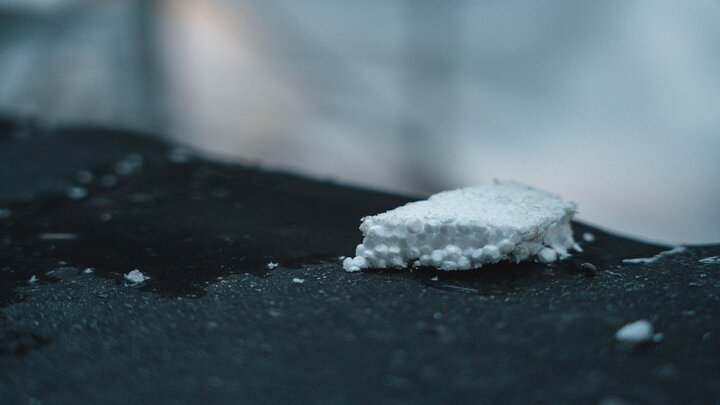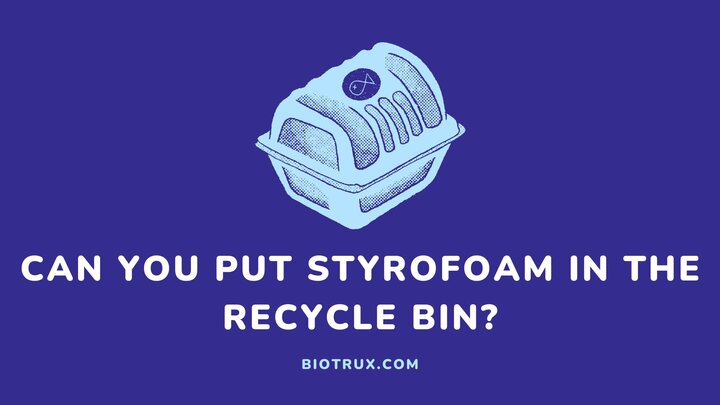Styrofoam is a common sight. It ideally serves as a cushion or feature in the packaging of various products. Despite their popularity, they remain harmful to nature. Hence, it is understandable to be interested in knowing if you can put Styrofoam in a recycle bin.
It is not appropriate to put Styrofoam in a recycle bin. Neither is it ideal for you just to leave them anywhere. This is because styrofoam or Expanded Polystyrene Packaging (EPS) can last for about 500 years or more without decomposing.
They can also contaminate themselves during their stressful and expensive recycling (shredding) process. As a result, most recycling banks do not accept Styrofoam.
In this guide, you will learn more about why random recycle bins are inappropriate for styrofoam, their properties, and the processes involved in recycling them.
You will also learn about the best way to dispose of the polystyrene material and alternative options for reuse.
Properties of Styrofoam
- Styrofoam is a product of styrene, a petroleum-based material
- Its composition is about 98% air, hence, it is very lightweight
- Styrofoam is thermoplastic (can take up any shape in heat)
- It also expands under pressure
Can You Put Styrofoam in the Recycle Bin?

Styrofoam can be put in a recycle bin but not just any bin. Such a bin or recycling center must have a history of recycling the polystyrene product. The only issue is finding these bins or recycling centers near you.
This is because recycling styrofoam is complex and not very cost-effective. Your best bet is to check your city’s website for a center or recycle bin near you. You can also contact your local municipal waste office.
Why is Styrofoam Difficult to Recycle?
Styrofoam foam is difficult to recycle because every step in the process takes time and money. Here is a breakdown of the processes involved:
- Recycling styrofoam begins with getting an EPS compactor that compresses it into an ultra-dense shape. This gives room for easy transportation to the special (recycling) facility.
- Upon arrival, the compressed styrofoam undergoes shredding and becomes non-expandable.
- At this point, it can be repurposed for alternative use. Most of the product of styrofoam recycling is used for making park benches, picture frames, and crown molding.
- Before achieving its reusable state, a series of recycle bin contamination by the foam shreds and rectification must have occurred.
The major headache with styrofoam recycling is that its physical and financial demand does not commensurate with reuse profits. Hence, landfill sites (dumping or garbage ground) are considered the best place for styrofoam.
7 Ways to Reuse Styrofoam
If finding a recycle bin that accepts styrofoam proves difficult, these are 7 ways you can maximize the polystyrene product:
1. For potting in container plants
Potting soil with gardening supplies like perlite and composted manure can be expensive. With broken-down styrofoam or polystyrene, you can bypass this cost. However, this practice is only ideal for decorative plants, not edible ones.
All you need is to ensure that you add enough soil to the polystyrene layer. In other words, the plant should be at least 6 inches deep into the soil.
2. For insulation (better with flame retardant)
Polystyrene sheets are ideal for insulating garage windows during winter and provide extra insulation in greenhouses. High-density ones also feature as insulators for beehives.
However, you should note that polystyrene is highly flammable. Spraying them with flame retardants improves their insulating prowess and makes them safer.
3. As a glue
Polystyrene can also become glue. The process requires liquid acetone, a ceramic, glass, or metal container.
Pour acetone into the container and place polystyrene scraps in the liquid. Press the scraps gently into the liquid until you get a gooey (soft and sticky) solution, which is your glue.
This glue must be stored properly unless you want it to dry out soonest.
4. As stuffing
If you are making a pillow by yourself and need extra stuffing material, styrofoam can help. A little quantity will help your pillow retain its cuddly feeling.
5. For cooling
Polystyrene is a poor conductor of heat. Hence, their coolers are effective in preventing ice from melting very quickly.
FAQs
Is it styrofoam paper or plastic?
Styrofoam is plastic. It is a brand name for polystyrene, a petroleum-based plastic containing styrene monomers.
Do bacteria grow on Styrofoam?
Despite its generational lifespan, styrofoam does house any form of mold or any form of bacteria under storage.
Is styrofoam worse than plastic?
Styrofoam is worse than plastic. Although both materials share similar production techniques, plastics are more receptive to recycling than styrofoam.
Conclusion
Throwing Styrofoam in just any recycle bin is bad and harmful to nature. To recycle it, you must locate a special recycle bin or center designed for them. These centers can be difficult to find, so most people reuse or dump them in landfills.
Recycling Styrofoam, like manufacturing it, pollutes and contaminates the environment and is rarely a cost-effective option. This is why companies keep working on other eco-friendly materials that can play the role of EPS.
You can also contribute to this effort by reducing the number of Styrofoam products you buy. Ways you can achieve this include opting for corn-based materials and choosing reduced packaging options when ordering a product online, just to name a few.
I hope you found this guide helpful. Polystyrene is also a poor conductor. When it features as a supporting material in carbon fiber, it does not alter its conductivity. To better understand electrical conductivity in carbon fiber, please see if carbon fiber is conductive.
Thank you for reading.

